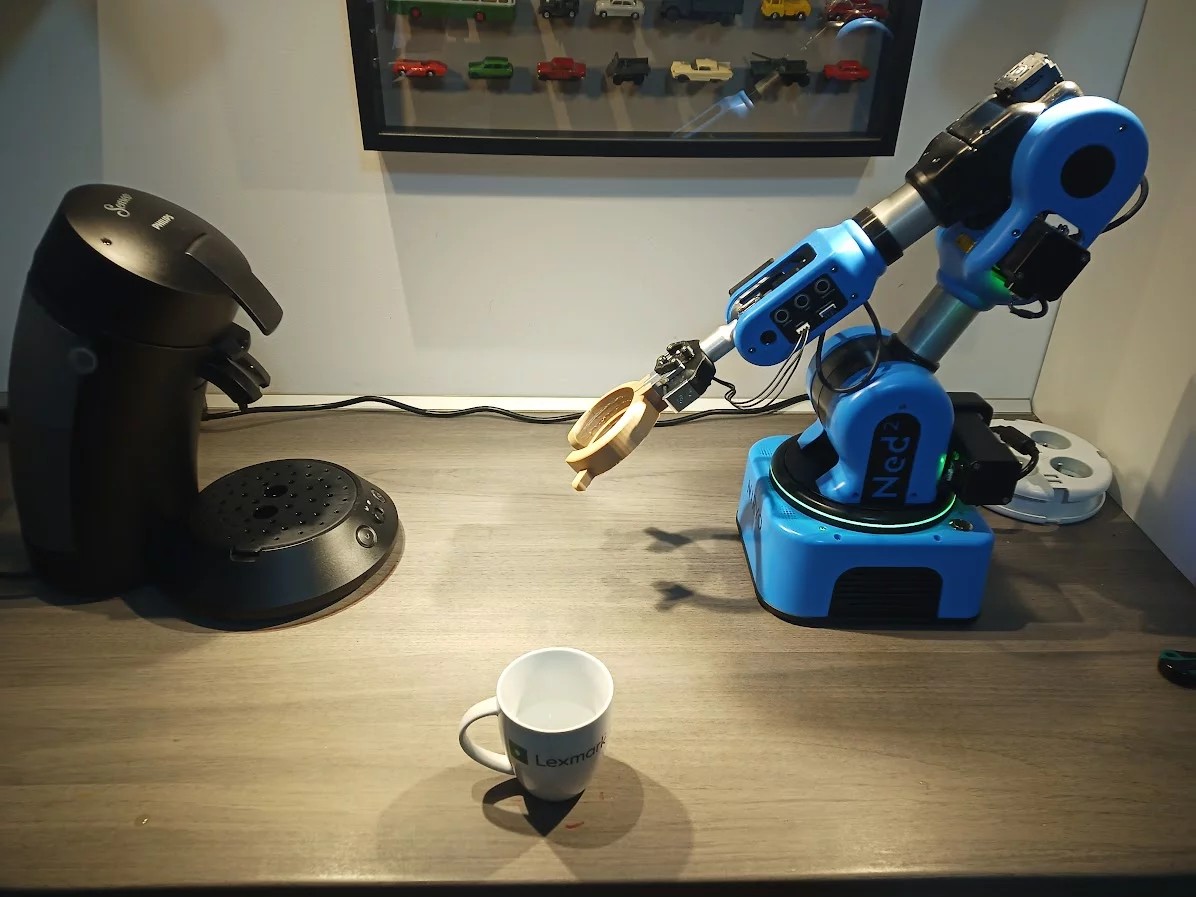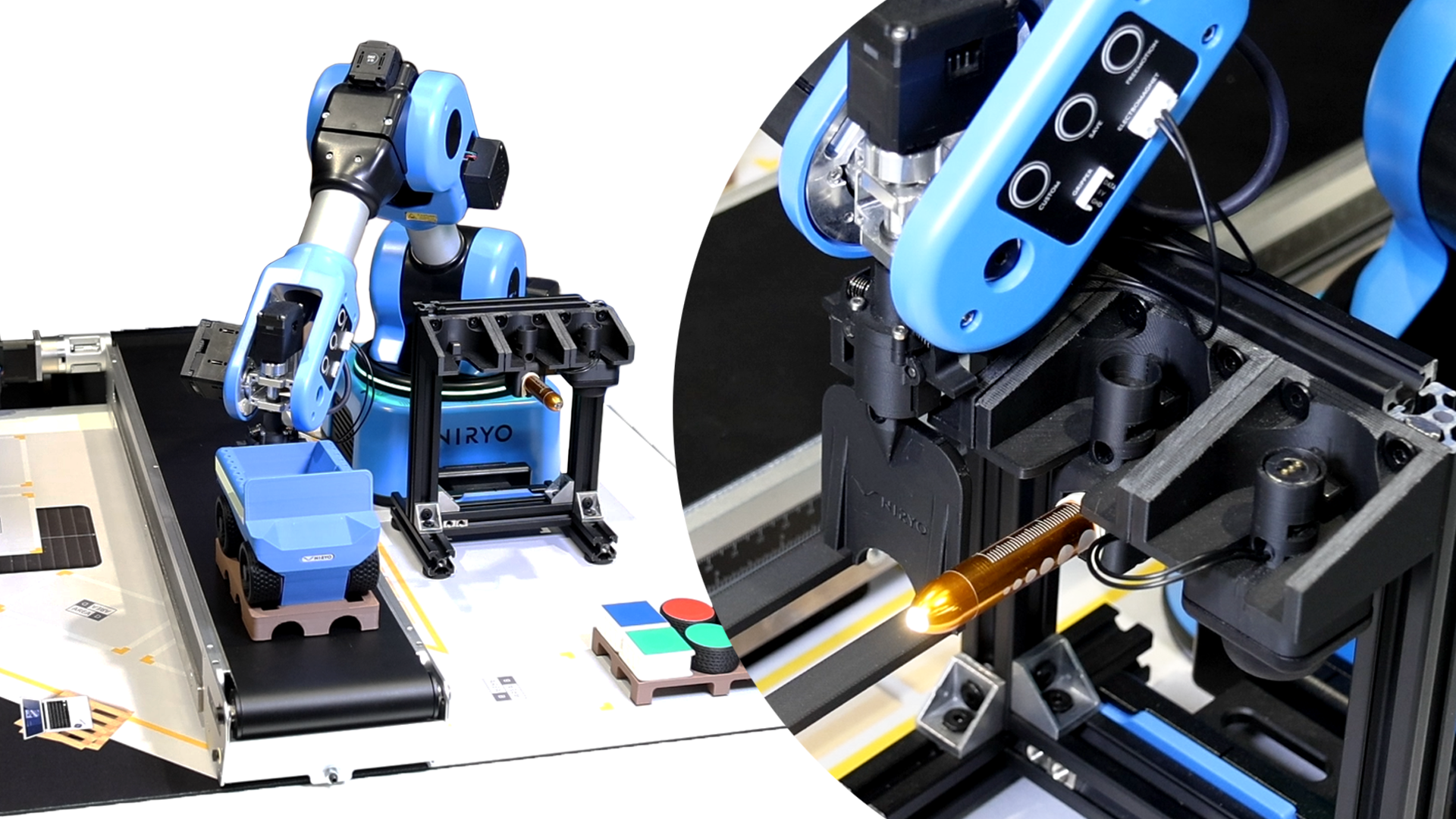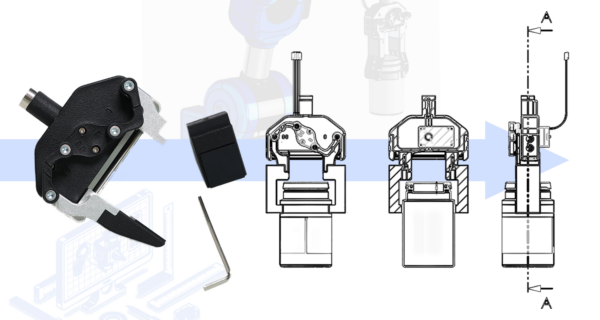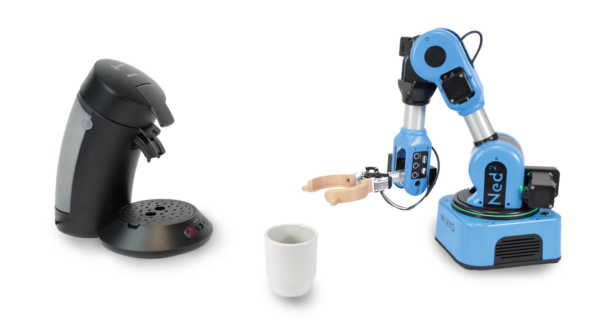CAO
Courses tagged with "CAO"
Project Lab: Designing an Autonomous Tool Changer
- Length: 20h
- Content Type: Project
- Programming: Blockly
- Equipment: Bundle STEM
Robotic tool-changing systems have become a key enabler of flexibility and efficiency in industrial automation and robotics. By allowing a single robot to switch between different end-effectors or tools autonomously, these systems reduce downtime, enhance adaptability, and support complex multi-step processes. Inspired by CNC machining centers, modern robotic tool changers incorporate mechanical, electrical, and sometimes pneumatic coupling mechanisms to ensure rapid and reliable transitions.
In this project, students will design, assemble, and program a quick tool changer for the Niryo Ned2 robot. The quick tool changer allows the robot to automatically switch between different tools (such as a fork, pen holder, or electromagnet), making it more versatile for automation tasks.
Through a combination of mechanical assembly, electronics, soldering, 3D printing, and programming, students will gain hands-on experience in building a functional robotic accessory from start to finish.
This project bridges mechanical engineering, electronics, and computer science, providing a real-world learning experience similar to industrial robotics integration.
By completing this project, students will:
-
Robotics & Mechatronics
-
Understand the role of quick tool changers in industrial robotics.
-
Learn how to integrate mechanical, electrical, and software systems in a robotic environment.
-
-
Mechanical Skills
-
Assemble mechanical components, including 3D-printed parts and locking mechanisms.
-
Adjust tolerances, orientation, and printing parameters to ensure functional fits.
-
-
Electronics & Wiring
-
Wire and solder connectors (JST, plugs, cables) safely and accurately.
-
Verify electrical connections with a multimeter to prevent short circuits.
-
-
3D Printing & Design
-
Use 3D-printed custom parts (lever, lock, cover, adaptors) in robotic assemblies.
-
Apply design-for-assembly concepts, such as orientation and post-processing (sanding).
-
-
Programming & Control
-
Configure NiryoStudio to recognize and switch tools.
-
Write simple Blockly programs to automate tool changes.
-
-
Problem-Solving & Safety
-
Identify and correct common issues (tolerances, misalignment, electrical errors).
-
Apply safe practices in assembly, wiring, and robot operation.
-
- Enrolled students: 16
Design of special jaws for the Ned2
- Content Type: Lab
- Equipment: Bundle STEM
Scenario
Redesign the custom gripper jaws to hold jars of capsules.
The redesign will be optimized with the objective of minimizing the mass of the jaws while maintaining sufficient rigidity.
Laboratory Contents
Chapter 1 (1h30): Mechanical simulation of the gripper
- Validate the mechanical model
- Configure the model and carry out a static simulation
- Collect simulation results
Chapter 2: Design Optimization (3h)
- Simulate the behavior of the jaw under load
- Optimize the shape of the jaw
- Remodel the jaw
Chapter 3 (3h): Implementation
Prerequisites
Knowledge of mechanical technology: forces, stresses, kinematic links, as well as volume modeling, is preferable.
Required components
 Ned2
Ned2
 NiryoStudio
NiryoStudio
- CAD software
- Mechanical simulation software
- Topological optimization software
- Enrolled students: 20
The Coffee Challenge
- Length: 10h
- Content Type: Project
- Programming: Blockly
- Equipment: Bundle STEM
Scenario
The NED2 Robotic Arm makes a cup of coffee without human intervention.
The student discovers the basic functions of the Ned2 robotic arm. In this exercise, the Ned2 robotic arm, using the basic blocks of the Blockly “No Code” programming environment, performs a simple operation of picking up and placing a cup of coffee and pressing a button on the coffee machine. The exercise aims to show the student how to configure a robotic cell, how to adapt a gripper to specific needs (size of the coffee cup and button of the coffee machine) and how to carry out the sequence of movements to achieve the stain.
This exercise lends itself to a competition between different groups of students.

Laboratory Contents
Chapter 1: Creation of the robotic cell
- Optimize the placement of the robotic arm, coffee machine and cup
Chapter 2: Modifying the “Custom Gripper”
- Create a tool specific to the task to be carried out
Chapter 3: Discovering Blockly
- Getting started with Blockly
Chapter 4: Programming with Blockly
- Create the movements that the NED2 Robotic Arm must perform.
Chapter 5: Post your challenge on Niryo’s discord server
Required equipment
 Ned2
Ned2
 NiryoStudio
NiryoStudio
Knowledge Prerequisites
This Laboratory is a good first contact with the fundamentals of Blockly.
- Enrolled students: 15





